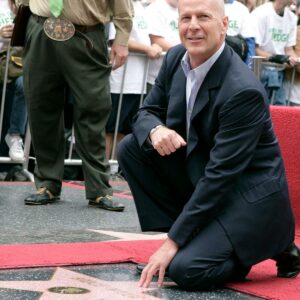Introduction
Aretha Franklin, the undisputed “Queen of Soul,” was not just a musical powerhouse; she was a cultural icon whose influence transcended the boundaries of music. Franklin’s voice is etched in the annals of music history, but her style—encompassing fashion, body language, and stage presence—was equally crucial in shaping her legacy. Her music videos stand as visual testimonies to her artistry, where her fashion choices, gestures, and overall performance harmoniously amplified the emotional depth of her songs. This article delves into how Aretha Franklin’s distinct style in her music videos became an integral part of her storytelling, transforming these videos into powerful visual expressions of soul, strength, and resilience.
Section 1: The Intersection of Fashion and Soul
Aretha Franklin’s fashion choices in her music videos were not merely aesthetic but were deeply intertwined with the emotional narratives of her songs. Her wardrobe was a reflection of her identity, embodying both the sophistication and the raw power that characterized her music. Whether she was delivering a heartfelt ballad or a rousing anthem of empowerment, Franklin’s fashion served as a visual extension of the themes she explored in her music.
Franklin’s fashion evolution mirrored her musical journey. In the early stages of her career, her style was more conservative, often characterized by elegant gowns and sophisticated attire that reflected the refinement of her voice. As her music became more assertive and socially conscious, so did her fashion. She embraced bold, statement-making outfits that not only complemented the music but also made powerful cultural statements.
Example: “Freeway of Love”
In the music video for “Freeway of Love,” Franklin’s vibrant outfits were a perfect match for the song’s energetic and joyful tone. The video, a celebration of freedom and the joy of life, featured Franklin in colorful, bold attire that mirrored the exuberance of the music. Her fashion choices in this video were not just about looking good—they were about embodying the very essence of the song. The bright colors and lively patterns communicated a sense of liberation and joy, making the video a visual representation of the themes Franklin was singing about.
Franklin’s fashion in “Freeway of Love” also reflected the broader cultural context of the 1980s, a time when fashion was bold and expressive. By embracing these trends, Franklin positioned herself not only as a musical icon but also as a fashion influencer who could set trends and make statements through her wardrobe.
Example: “A Rose Is Still a Rose”
In “A Rose Is Still a Rose,” a song that speaks to the strength and resilience of women, Franklin’s fashion choices were equally powerful. The video features Franklin in elegant, regal attire that underscores the message of dignity and empowerment. Her style in this video was a direct reflection of the song’s themes—she was not just singing about the strength of women; she was embodying it.
Franklin’s fashion in this video also communicated a sense of timelessness. The elegant gowns and sophisticated jewelry were not tied to any particular era, which allowed the video to transcend time and remain relevant long after its release. This timeless quality was a hallmark of Franklin’s style—she was always current, yet never beholden to fleeting trends.
Section 2: Body Language as a Narrative Tool
Aretha Franklin’s body language in her music videos was a critical component of her storytelling. Her gestures, facial expressions, and movements were all carefully calibrated to enhance the emotional impact of her music. Franklin understood that music videos were not just about the music—they were about conveying the story and emotion behind the song. Her body language was a powerful tool in this regard, allowing her to communicate on a visceral level with her audience.
Franklin’s body language was characterized by a confidence and authenticity that drew viewers in. She had an uncanny ability to convey complex emotions through subtle gestures and expressions, making her music videos deeply affecting.
Example: “I Say a Little Prayer”
In the video for “I Say a Little Prayer,” Franklin’s body language was a masterclass in subtlety. The song is about love and longing, and Franklin’s performance captured these emotions perfectly. Her gestures were minimal, but every movement was imbued with meaning. The way she moved her hands, the way she looked into the camera—everything was designed to convey the depth of emotion in the song.
Franklin’s facial expressions were particularly powerful in this video. She didn’t need to overact to convey the song’s themes—her expressions were enough to communicate the yearning and tenderness at the heart of the song. This ability to convey so much with so little was a testament to Franklin’s artistry. She understood that sometimes, less is more, and she used her body language to draw the viewer into the emotional world of the song.
Example: “Ain’t No Way”
In “Ain’t No Way,” Franklin’s body language was similarly effective. The song is a slow, soulful ballad about heartbreak and emotional pain, and Franklin’s performance captured these themes perfectly. Her movements were slow and deliberate, mirroring the tempo of the song. The way she swayed to the music, the way she closed her eyes as she sang—all of these gestures added depth to the emotional impact of the song.
Franklin’s body language in this video was a perfect complement to her vocal performance. The way she used her body to express the pain and longing in the song made the video a powerful visual representation of the music. Franklin understood that music videos were a form of visual storytelling, and she used her body language to tell the story of the song in a way that was both subtle and powerful.
Section 3: Stage Presence and Performance Power
Aretha Franklin’s stage presence was legendary, and this magnetic presence was equally potent in her music videos. Her ability to captivate an audience through the screen was a testament to her deep connection with her music and her fans. Franklin’s performance style was always rooted in sincerity, making her music videos not just visual accompaniments to her songs, but powerful extensions of her artistry.
Franklin’s stage presence was characterized by a combination of confidence and vulnerability. She could command the stage with an aura of authority, yet there was always an underlying sense of emotional authenticity that made her performances deeply affecting.
Example: “Respect”
In the iconic video for “Respect,” Franklin’s stage presence was nothing short of electrifying. The song is an anthem of empowerment, and Franklin’s performance style perfectly captured this theme. Her powerful stance, confident gaze, and commanding gestures made it clear that she wasn’t just singing about respect—she was demanding it.
The video for “Respect” became an anthem for empowerment, not just because of the song’s lyrics, but because of the way Franklin performed it. Her stage presence was so powerful that it elevated the song to a cultural phenomenon. Franklin’s performance style in this video was a masterclass in how to use stage presence to amplify the impact of a song. She didn’t just sing the song—she embodied it, making the video a powerful visual representation of the song’s themes.
Example: “Think”
In “Think,” another anthem of empowerment, Franklin’s stage presence was equally commanding. The song is a call for freedom and independence, and Franklin’s performance style reflected these themes perfectly. Her movements were confident and assertive, and her gaze was direct and unwavering.
Franklin’s performance in “Think” was a perfect example of how she used stage presence to enhance the impact of her music. Her ability to convey strength and determination through her body language and gestures made the video a powerful visual representation of the song’s themes. Franklin understood that music videos were not just about the music—they were about creating a visual narrative that complemented and enhanced the song.
Section 4: The Cultural Impact of Aretha Franklin’s Style
Aretha Franklin’s style in music videos didn’t just impact her audience—it also left a lasting mark on popular culture. Her unique blend of fashion, performance, and music set the standard for future generations of artists. Franklin’s ability to convey complex themes through her style helped bridge the gap between music and visual storytelling, influencing countless performers who followed in her footsteps.
Franklin’s style was a powerful tool for cultural expression. She used her fashion choices, body language, and stage presence to communicate messages of empowerment, resilience, and authenticity. In doing so, she not only shaped the way music videos were made but also influenced the broader cultural landscape.
Example: Influence on Beyoncé
Beyoncé, one of the most iconic performers of the modern era, has cited Aretha Franklin as a major influence on her career. Beyoncé’s music videos often feature bold fashion choices, powerful body language, and commanding stage presence—all elements that Franklin pioneered. Beyoncé’s ability to convey complex themes through her style is a direct result of Franklin’s influence.
In videos like “Single Ladies” and “Formation,” Beyoncé uses her style to communicate messages of empowerment and independence, much like Franklin did in her music videos. The way Beyoncé commands the screen with her stage presence and uses fashion as a tool for storytelling is a testament to Franklin’s enduring influence.
Example: Influence on Jennifer Hudson
Jennifer Hudson, another powerhouse vocalist, has also been heavily influenced by Franklin. Hudson’s music videos often feature strong fashion choices and powerful performances that echo Franklin’s style. In the video for “Spotlight,” Hudson’s fashion and body language play a crucial role in conveying the song’s themes of independence and self-worth.
Hudson’s ability to use her style to enhance the impact of her music is a direct result of Franklin’s influence. Hudson has often spoken about how Franklin inspired her as an artist, and this influence is evident in her music videos.
Conclusion: Style as a Powerful Medium
Aretha Franklin’s style was an integral part of her identity as an artist. In her music videos, her fashion choices, body language, and stage presence all worked together to enhance the themes of her music. Franklin’s unique ability to convey emotion through every aspect of her performance made her music videos more than just entertainment—they were powerful expressions of soul, strength, and resilience.
As the “Queen of Soul,” Aretha Franklin not only revolutionized music but also redefined the way style can be used as a powerful medium for storytelling in the world of music videos. Her influence can be seen in the work of countless artists who followed in her footsteps, and her legacy as a cultural icon will continue to inspire future generations.
Through her music videos, Franklin showed that style is not just about fashion—it’s about using every element of performance to communicate the deeper emotional truths of the music. She demonstrated that style can be a powerful medium for storytelling, and in doing so, she changed the landscape of music videos forever.





